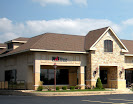Hope and fear are overlapping in the commercial real estate industry on this eve of a new decade. The industry doesn't know whether to look out for it or look forward to it.
On the one hand, the industry is grateful that 2009 is coming at long last to an end. It was by many accounts the worst year in its history as values and incomes shrunk at precipitous rates. Whether that comment can be backed up by statistics is debatable, but few would argue that the hurt was deep and widespread.
On the other hand, much of the bad from 2009 will carry over into 2010. Investors are saddled with troublesome debt and weak fundamentals and 2010 presents very few elixirs for the pains of 2009.
Go back in time one year and remember that the industry felt it was chronologically closer to the beginning of a recovery than the beginning of the downturn. The industry may seem a long way from those sentiments now. However, 2009 did give us surprises it never expected. REITs proved far more resilient than feared and even managed to raise abundant more capital and experience a mini bull market.
Still going into 2010, there is a sense the industry could mangle Franklin Roosevelt's famous quote: We have nothing to fear but fear itself. This year, the saying might go: We have nothing to fear but those things for which we hope.
"Most exciting about 2010? Unprecedented low priced buying opportunities," said Andrew Segal, president of Boxer Property in Houston. "Worries about 2010? Unprecedented low priced selling opportunities."
While that remark may come off sounding a bit contrived, it's not. We received many similar paralleled phrases in responses to our query of industry executives for this story.
"What most excites me [about 2010] is the prospect that commercial real estate may find its inflection point and start to turn upward in 2010," said Paul N. Arena, president of Venturi Capital Advisors Inc. in New York. "The last month of the year has brought greater optimism, and the investors with whom we have relationships are preparing to underwrite and invest in 2010. I'm further excited by a return to basics that we are witnessing-a move away from chasing vague or general opportunistic strategies, in favor of generous but realistic returns generated by specific, focused strategies that are; preferably, hard asset backed, and that can pay some form of current return."
Then Arena continued: "I am concerned that one, the commercial lending market will be slow to react to the increase in activity and to accommodate it, and two, that managers won't recall the restraint and lack of underwriting standards that got them in trouble in the first place."
And there in a nutshell is the irony that we are at a point in this recession where the dichotomy between hope and fear is so narrow that the two seem as one.
What follows are comments from industry executives and observers first about what excites them about 2010 and second what worries them about 2010.
CLICK HERE TO VIEW COMMENTS
Source: CoStar
By Mark Heschmeyer
NEW LISTING! Westgate Shopping Center
16 hours ago






